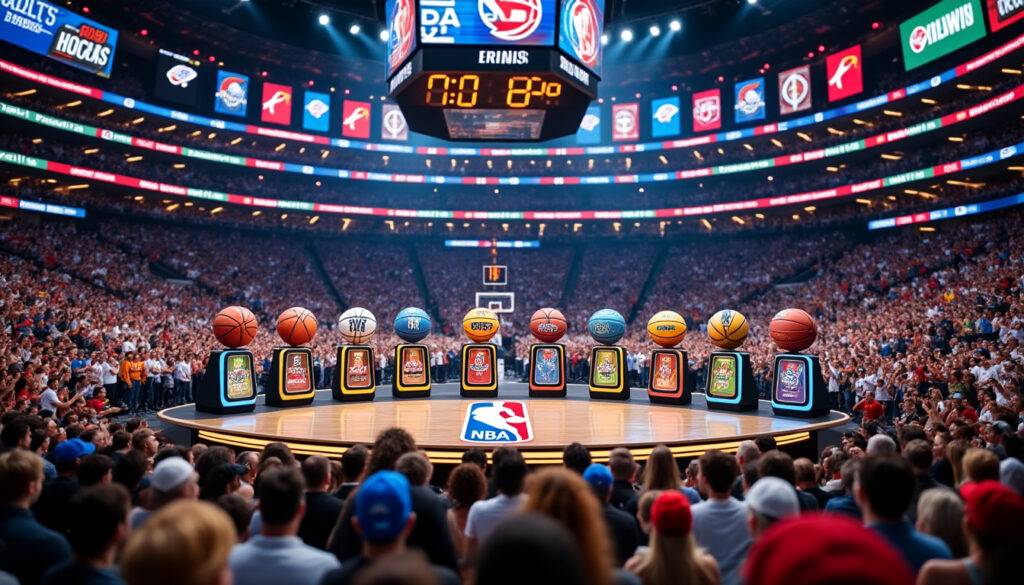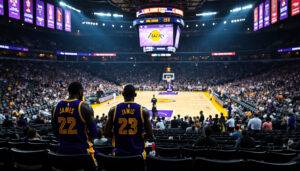Understanding the NBA draft lottery: key details on date, time, odds, format, and historical insights

The NBA Draft Lottery is a high-stakes event that commands attention every offseason, shaping the future of franchises and the careers of young talent. Come May 12, 2025, Chicago will host this pivotal moment, where 14 teams desperate for a game-changing prospect will see their fortunes altered—sometimes abruptly. Knowing the ins and outs of the lottery—the odds, the format, the participating teams, and its colorful history—gives basketball fans a front-row seat to drama that transcends just luck. But is the current format truly fair in determining draft order? Let’s break down what you need to know about the 2025 NBA Draft Lottery with an analytic edge.
2025 NBA Draft Lottery: Date, Time, and Teams Involved
The 2025 NBA Draft Lottery is scheduled for May 12 in Chicago, kicking off the NBA offseason shuffle. Coverage starts sharply at 7 p.m. Eastern on ESPN, with live streaming available on the NBA streaming hub. For fans craving every moment of suspense, this is the night where futures are either made or complicated.
Who’s in the mix? The lottery includes the 14 teams that failed to make the playoffs in 2025. That list spans contrasting fortunes, from the struggling Utah Jazz and Washington Wizards who both sported 14% odds, to teams like the Dallas Mavericks and Chicago Bulls, hovering below 2%. Here’s the breakdown:
- Utah Jazz (17-65) – 14%
- Washington Wizards (18-64) – 14%
- Charlotte Hornets (19-63) – 14%
- New Orleans Pelicans (21-61) – 12.5%
- Philadelphia 76ers* (24-58) – 10.5%
- Brooklyn Nets (26-56) – 9%
- Toronto Raptors (30-52) – 7.5%
- San Antonio Spurs (34-48) – 6%
- Phoenix Suns (36-46) – 3.8% (pick to Houston Rockets via trade)
- Portland Trail Blazers (36-46) – 3.7%
- Dallas Mavericks (39-43) – 1.8%
- Chicago Bulls (39-43) – 1.7%
- Sacramento Kings** (40-42) – 0.8%
- Atlanta Hawks (40-42) – 0.7% (pick to San Antonio Spurs)
Both the 76ers’ and Sacramento’s picks may shift hands due to trades, adding another layer of complexity to an already convoluted process.
Why the Current Lottery Format is Both Fair and Flawed
Since the NBA instituted the lottery back in 1985, the league has sought to balance rewarding poor teams with keeping the draft competitive. The current system caps the worst teams’ chances at 14% for the top pick, ensuring no team holds absolute dominion over the draft order. This means the three teams with the worst records enter on pretty equal footing for the coveted No. 1 pick. The rest of the participating teams’ odds decrease proportionally based on their records, mapping out the entire range down to the 14th pick.
Here’s an overview of how the four top picks are determined on lottery night:
- Four ping-pong balls numbered 1 through 14 are drawn from a machine after mixing.
- There are 1,001 possible ball combinations, 1,000 of which are assigned to teams based on their odds.
- The first four combinations drawn assign picks Nos. 1 through 4 respectively.
- The remaining teams pick in inverse order of their regular-season records, from fifth to fourteenth.
A certified auditor from Ernst & Young supervises the draw, ensuring a level of transparency and integrity during the process. Still, the system harbors flaws, like the persistence of tanking behavior and occasional unexpected leaps by teams with minuscule odds, raising questions about whether pure luck should define franchise rebuilding opportunities.
Historical Insights and Draft Lottery Impact on Team Fortunes
Understanding the lottery’s origins sheds light on its controversial nature. Before 1985, top draft picks were decided by a simple coin flip between the worst teams in each conference—a method almost laughably rudimentary by today’s standards. Since then, history has been peppered with surprises that altered NBA landscapes.
- 2024: Atlanta Hawks defied a slim 0.7% chance to secure their franchise’s first No. 1 pick.
- 2023: San Antonio Spurs landed Victor Wembanyama, the draft sensation who then stunned the league with explosive performances. Learn more about his rise here.
- 2022: Orlando Magic gambled right with Paolo Banchero, restoring hope with their top selection.
- Most iconic No. 1 picks include: LeBron James (2003), Anthony Davis (2012), and Zion Williamson (2019)—whose unique path from high school to NBA stardom is detailed here.
Draft outcomes often signal the trajectory of franchises. The uneven distribution of talent in drafts and the lottery’s randomness have fueled furious debates on the best way to overhaul struggling teams while preserving competitive balance.
What to Expect on Draft Night and the Top Prospects to Watch
The lottery’s immediate aftermath sets the stage for the 2025 NBA Draft on June 25-26 in Brooklyn, a two-day event showcasing the league’s newest stars. The first round airs on ABC and ESPN, with second-round picks covered by ESPN and streaming platforms. If draft talk piques your interest, early entries add extra intrigue this year, complicating the strategizing for every team.
Among the touted prospects expected to be locked in the top five are:
- Cooper Flagg (Duke) – touted for his defensive prowess and versatility.
- Dylan Harper (Rutgers) – a sharpshooter with a high basketball IQ.
- Airious “Ace” Bailey (Rutgers) – explosive athleticism and playmaking skills.
- VJ Edgecombe (Baylor) – a solid two-way guard with scoring ability.
- Tre Johnson (Texas) – impressive size and shooting range for a wing.
Experts emphasize that while projections create buzz, the lottery’s unpredictable nature keeps everything in flux. For a detailed mock draft and insights, the latest analysis on this year's class can be found here.
Breaking Down the NBA Draft Lottery System and Its Economic Impact on Teams
The lottery doesn’t just shuffle draft picks; it has broader implications related to team payroll and salary cap strategy. How teams position themselves in the lottery can influence their decisions in free agency, trades, and contract negotiations. To understand these financial stakes, take a deep dive into how the NBA salary system works.
Teams with superior draft positions can leverage rookie contracts as cap-friendly assets, while poor drafting or lottery misses can lead to a carousel of jack-of-all-trades veterans seeking fits. The nuances of the lottery system echo far beyond May 12, affecting roster building strategies across the league.

